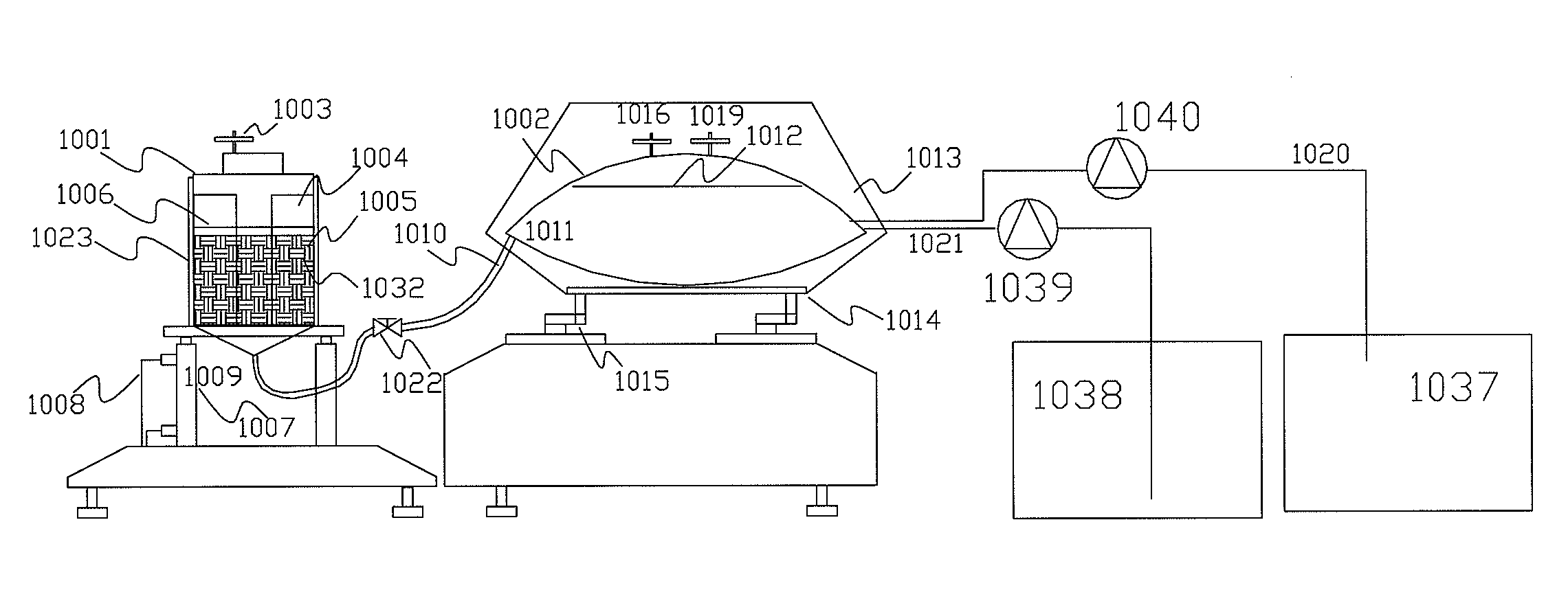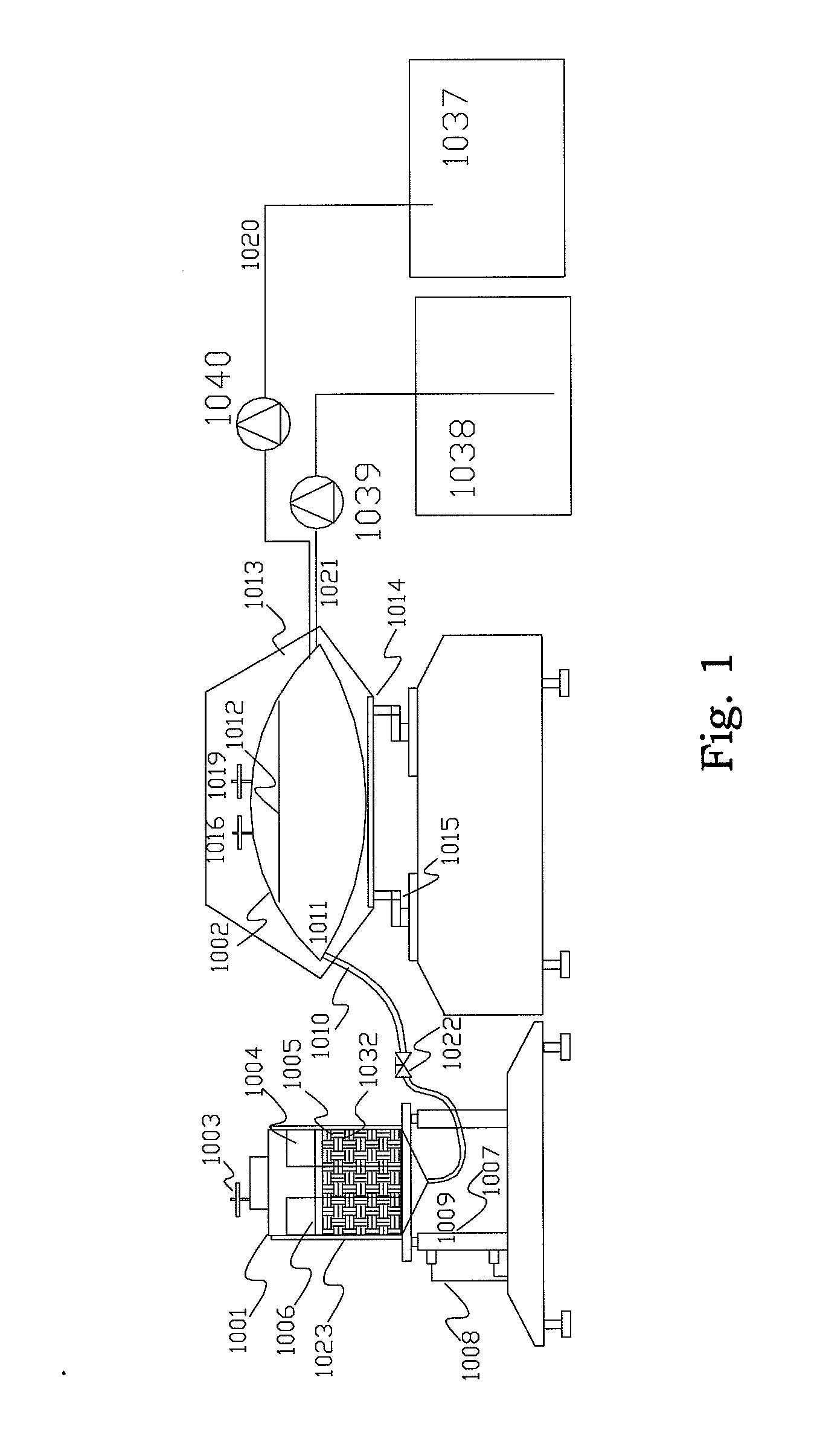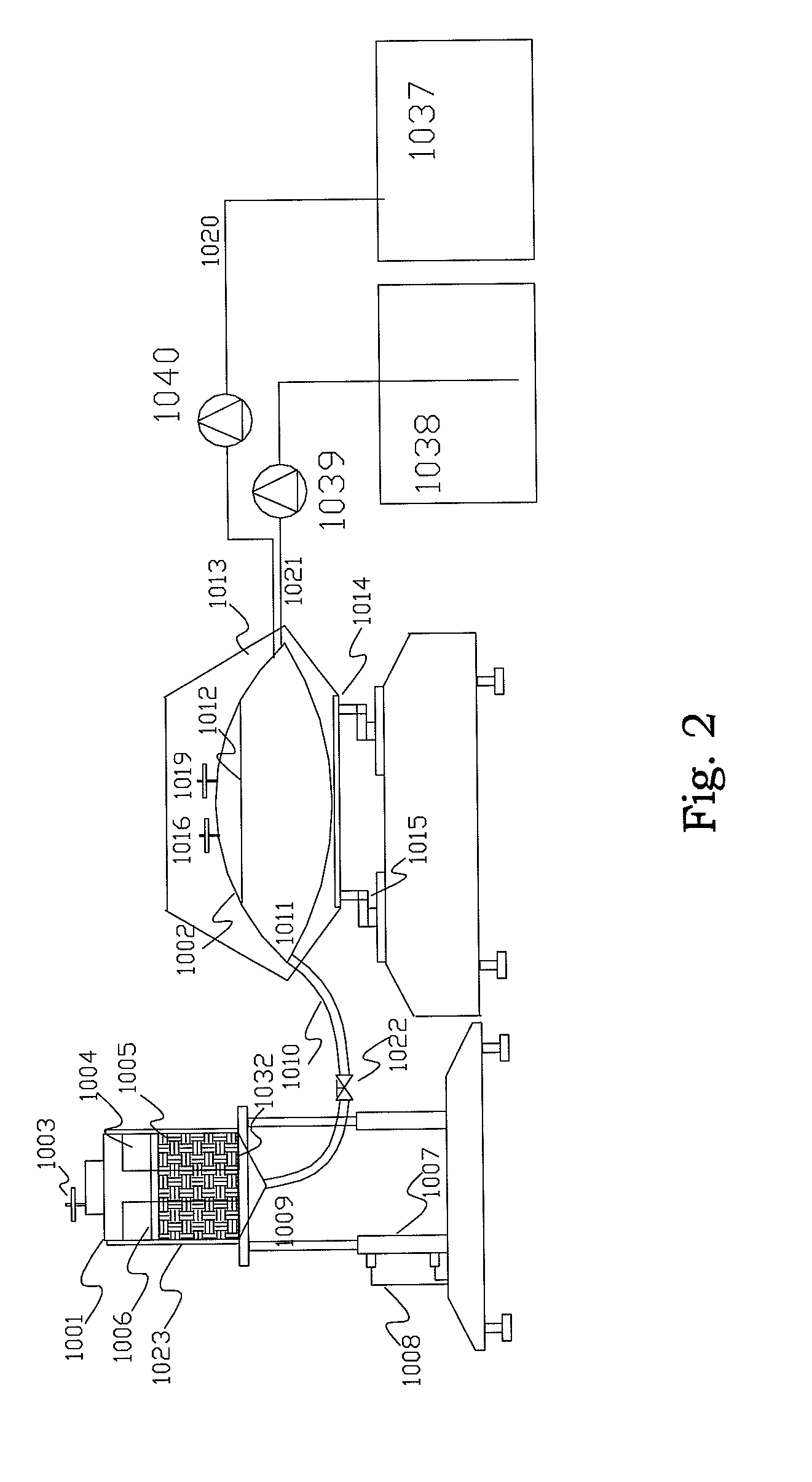Scalable packed-bed cell culture device
a cell culture device and packed bed technology, applied in the field of scalable packed bed cell culture device, can solve the problems of high labor intensity, difficult and complex techniques for culture cells such as eukaryotic cells, animal cells, mammalian cells and/or tissue, and requiring a great deal of labor. achieve the effect of high cell density and high yield
- Summary
- Abstract
- Description
- Claims
- Application Information
AI Technical Summary
Benefits of technology
Problems solved by technology
Method used
Image
Examples
example 1
Cell Distribution with the Novel Cell Inoculation Method
[0049]Prepare one cylinder with 54 cm high and 6 cm in diameter. Fill the cylinders with BioNOC II matrixes (products from CESCO Bioengineering Co., Ltd., www.cescobio.com.tw). Prepare cell culture medium 1.5 L containing well-mixed 1.1×106 cells / ml. Introduce the cell laden culture medium into the cylinder from top-right by peristaltic pumping until the void space among the matrixes is filled with the culture medium. Place the cylinder into CO2 incubator and allow sitting for 3 hours. After 3 hours, pick matrix samples from top of the cylinder every 9 cm vertical distance and every 3 cm horizontal distance. For comparison purpose, another experiment was executed with conventional inoculation method by introducing concentrated inoculums into a matrix vessel with 40 cm height and packed with BioNOC II carriers and pre-filled with culture medium. The medium was then started recirculated from top to bottom for 3 hours. After 3 hou...
example 2
Cell Culture and Virus Production
[0050]The culture device is constructed according to FIG. 3 except the mixing tank was constructed by a flexible bag in a shaker in stead of magnetic stirrer. Namely, the mixing vessel is a 50 L flexible medium bag placed in a thermostatic shaker with rotating rate and temperature control; the matrix vessel is a 10 L glass vessel packed with BioNOC II carriers. Two chambers are connected with a ½″ silicone tube and clamped to stop the medium flow between the two chambers. The medium flow is controlled by an air pump and a vacuum pump with timer control, and is connected to the matrix vessel with a silicone tube. There is a 0.22 um air filter between the pumps and the matrix vessel in order to prevent contamination. The 50 L flexible medium bag was filled with 40 L culture medium, namely DMEM / 5% FBS. A glass vessel containing 7 L culture medium with 1×106 cells / ml of MDCK cells was loaded into the 10 L glass vessel packed with BioNOC II carriers from ...
PUM
| Property | Measurement | Unit |
|---|---|---|
| area | aaaaa | aaaaa |
| porosity | aaaaa | aaaaa |
| pore size | aaaaa | aaaaa |
Abstract
Description
Claims
Application Information
 Login to View More
Login to View More - R&D
- Intellectual Property
- Life Sciences
- Materials
- Tech Scout
- Unparalleled Data Quality
- Higher Quality Content
- 60% Fewer Hallucinations
Browse by: Latest US Patents, China's latest patents, Technical Efficacy Thesaurus, Application Domain, Technology Topic, Popular Technical Reports.
© 2025 PatSnap. All rights reserved.Legal|Privacy policy|Modern Slavery Act Transparency Statement|Sitemap|About US| Contact US: help@patsnap.com



